Alaska Winter Photos
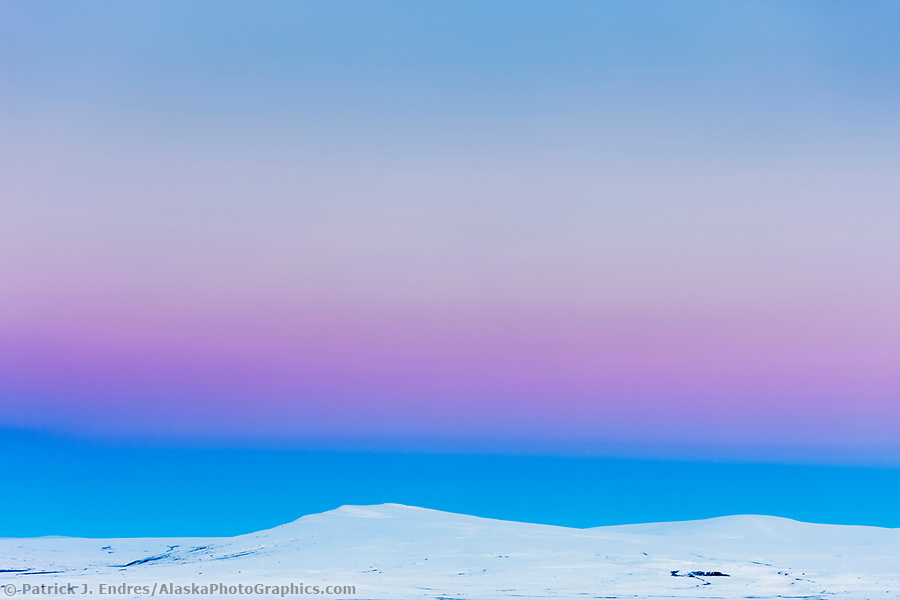
The Arctic palette of pink and purple sky lights the evening winter sky in the foothills of the Brooks Range mountains, Alaska. (Patrick J. Endres / AlaskaPhotoGraphics.com)
Winter is the most extended season in Alaska.
Cloaked in blankets of white snow and days of little sunshine, winter is a long season in Alaska. In the two most populated areas, snow generally is present from late October through early April. Alaska’s second largest town, Fairbanks, will reach temperatures of -50 Fahrenheit nearly every winter. Snowfall varies significantly, and some mountainous regions receive 1000 inches annually. Winter is a magical time of year; to live in Alaska and enjoy it, you need to like winter. All Alaska winter photos on this site may be licensed as stock photography or purchased as fine art prints for your home or office. Browse the links on this page or enter your keyword in the search box.
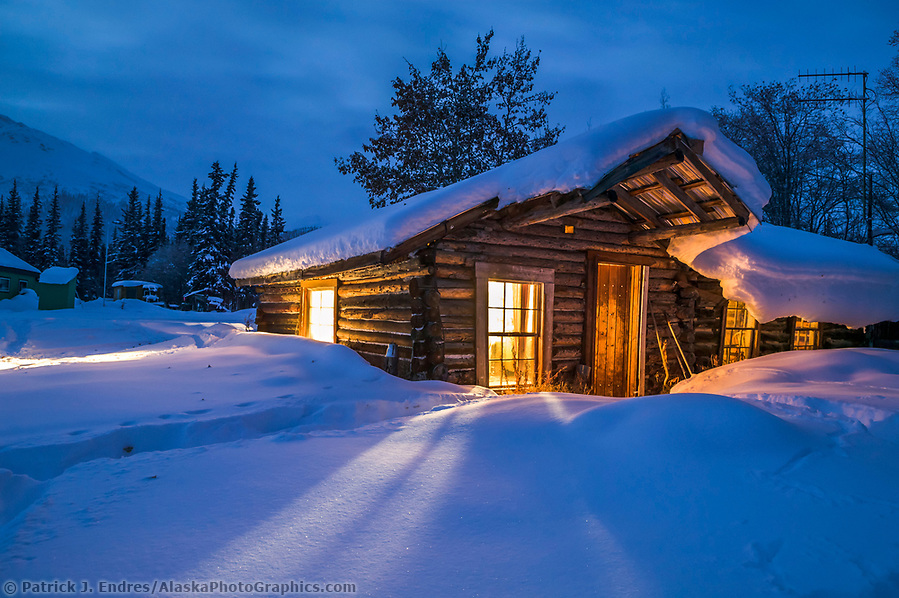
Historic log cabin in Wiseman, AlaskaHistoric log cabin in Wiseman, Alaska (Patrick J. Endres / AlaskaPhotoGraphics.com)
Aurora Borealis
The aurora borealis, although not strictly a winter phenomenon, is often associated with winter because Alaska’s nightless summer skies prevent one from seeing the stars and the aurora. Many visitors travel to Fairbanks to view the northern lights due to its latitude, which situates it in a prime spot for viewing the mysterious and heavenly aurora. Green glows, and arcs are the most common color of the auroral displays, but violets, blues, and sometimes deep reds are observed when the solar wind activity is exceptionally high. The UAF Geophysical Institute offers an aurora forecast website that forecasts potential auroral activity.
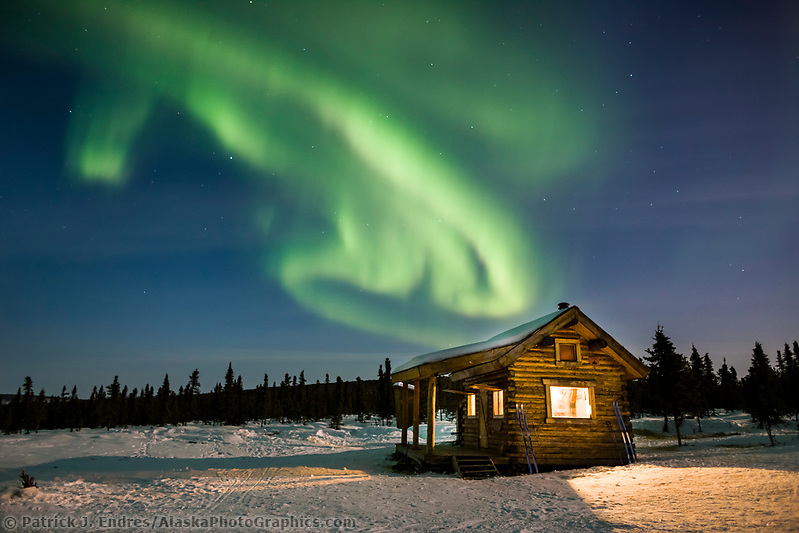
Aurora Borealis over Moose Creek cabin in the White Mountains National Recreation Area, Interior, Alaska. (Patrick J Endres / AlaskaPhotoGraphics.com)
Dog sledding
Dog sledding has a significant history in Alaska and is celebrated throughout the winter. In the past, the native Alaskans in rural villages traveled by dog sled and still do to this day, although it is not uncommon to see snowmobiles, cars, and trucks. Nearly 100 mushers worldwide compete in the Iditarod, a dog sled race from Anchorage to Nome, each year. This 1100-mile race is a tribute to a life-saving run on the same trail in 1925. Countless Nome children were sick with the disease diphtheria, and the only way to get the serum to Nome was via a dog sled.
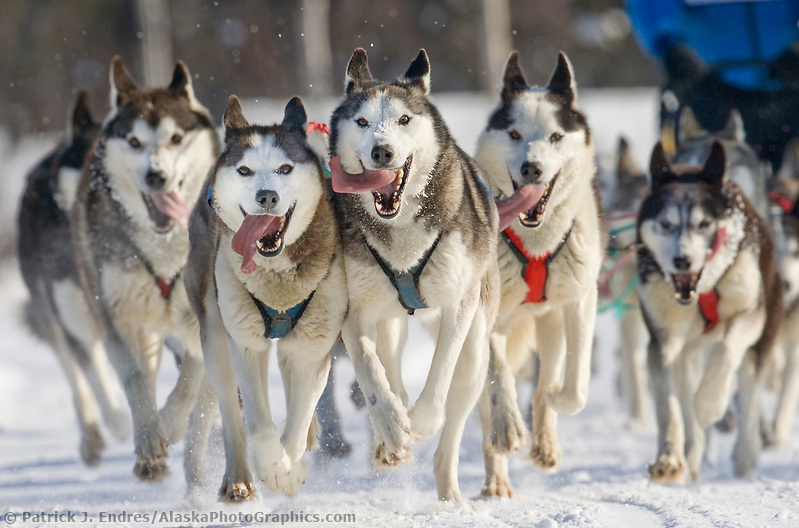
Musher J. P. Norris, 2007 Open North American Championship sled dog race (the world’s premier sled dog sprint race) is held annually in Fairbanks, Alaska. (Patrick J Endres / AlaskaPhotoGraphics.com)
Animals in winter
Many animals of the Arctic prepare themselves for the harsh winter in different ways. For some, the summer-long season of consuming food has provided them with the necessary nourishment for a long winter hibernation. Others, however, adapt to winter in different ways. One standard change observed among Ptarmigan, Snowshoe hares, Arctic foxes, and Short-tailed weasels is a change in color to their coat. This is referred to as cryptic or camouflage. It helps a prey species conceal itself among the white snow and thereby find some safety from the many predators seeking to survive a harsh winter.
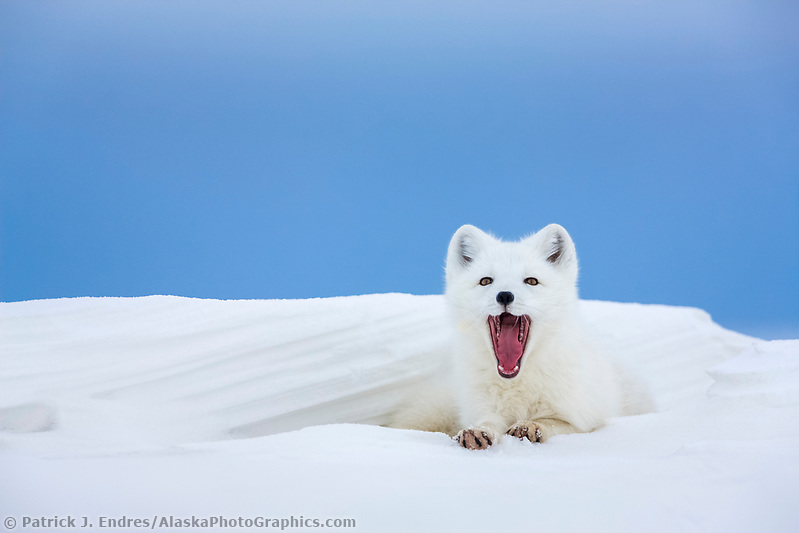
An Arctic fox in a white winter coat rests in a snowdrift along a lake in Alaska’s frozen north slope. (Patrick J. Endres / AlaskaPhotoGraphics.com)
Where does snow come from?
Snow crystals are born in the clouds when water vapor freezes on a particle of dust, a floating bit of bacteria, or another solid material. Ice crystals form around a core particle when cloud temperatures are at the freezing point or below, and there is ample moisture in the air. As water vapor condenses and freezes, the complex pattern of a snowflake is born, one molecule at a time. A snowflake’s hexagonal shape is born at the atomic level. It is here that water molecules bond together into stable crystal structures.
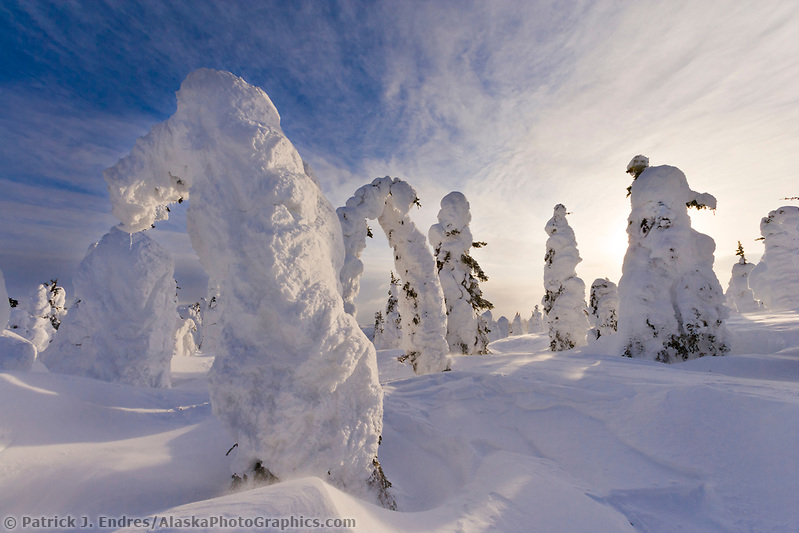
Spruce trees under snow load after a whole winter, severe, blowing snow and moisture pack heavy loads of snow in this sparse taiga environment. Interior, Alaska. (Patrick J. Endres / AlaskaPhotoGraphics.com)
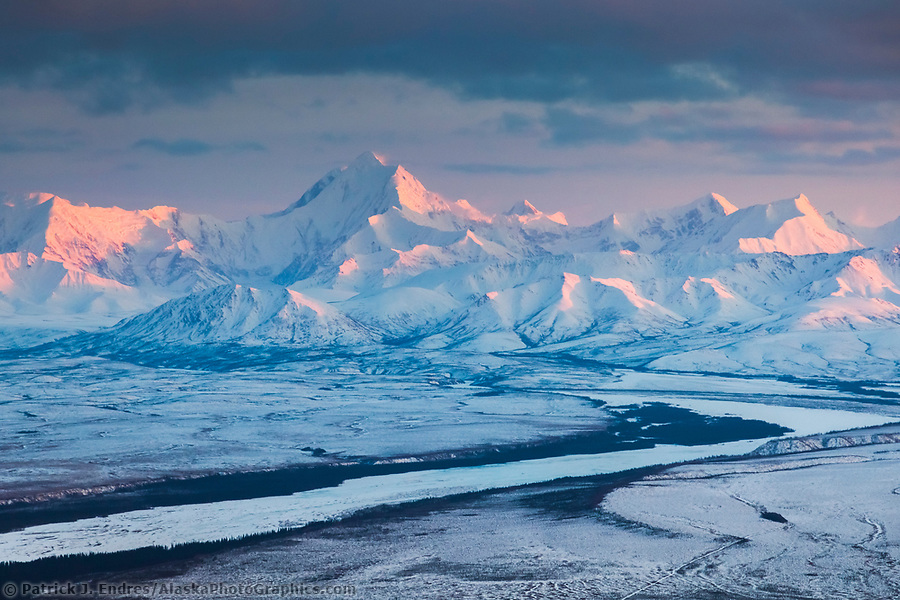
Aerial of alpenglow light on the snow-covered peak of Mount Hayes, 13,832 feet (4,216 m), the highest mountain in the eastern Alaska Range. View looking southwest. (Patrick J. Endres / AlaskaPhotoGraphics.com)
Types of Snow
Snow can be further classified into six basic patterns: Needles, columns, plates, columns capped with plates, dendrites, and stars. Dendrites are stars with attitude. They are three-dimensional star crystals with branches growing on more than a single plane. Components (or arms) connect randomly to a central structure. These complex shapes form under extremely cold conditions (-20 to -25 degrees C) when high atmospheric moisture levels are present. Each type results from different atmospheric and temperature conditions within the cloud.
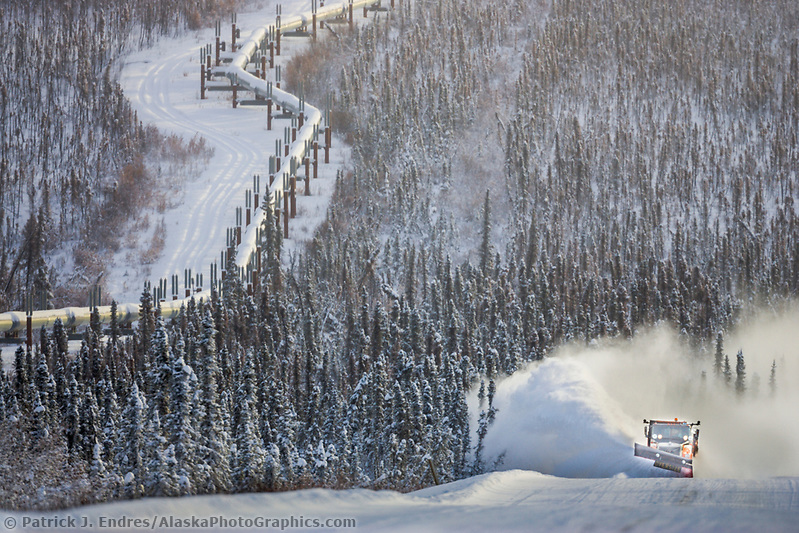
A snow plow clears snow from the James Dalton Highway (Haul Road), connecting Fairbanks with the Prudhoe Bay Oil fields. (Patrick J. Endres / AlaskaPhotoGraphics.com)
Terms for snow in Inupiat
The First Nation peoples of the Arctic live in a land where the nuances of snow hold great significance in daily life. For this reason, their language has many names for the different types of snow. The following words are taken from the Eskimo Inupiat Dictionary.
